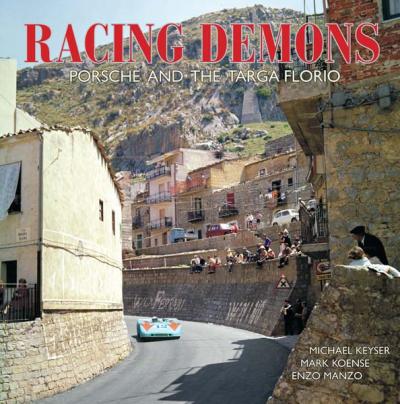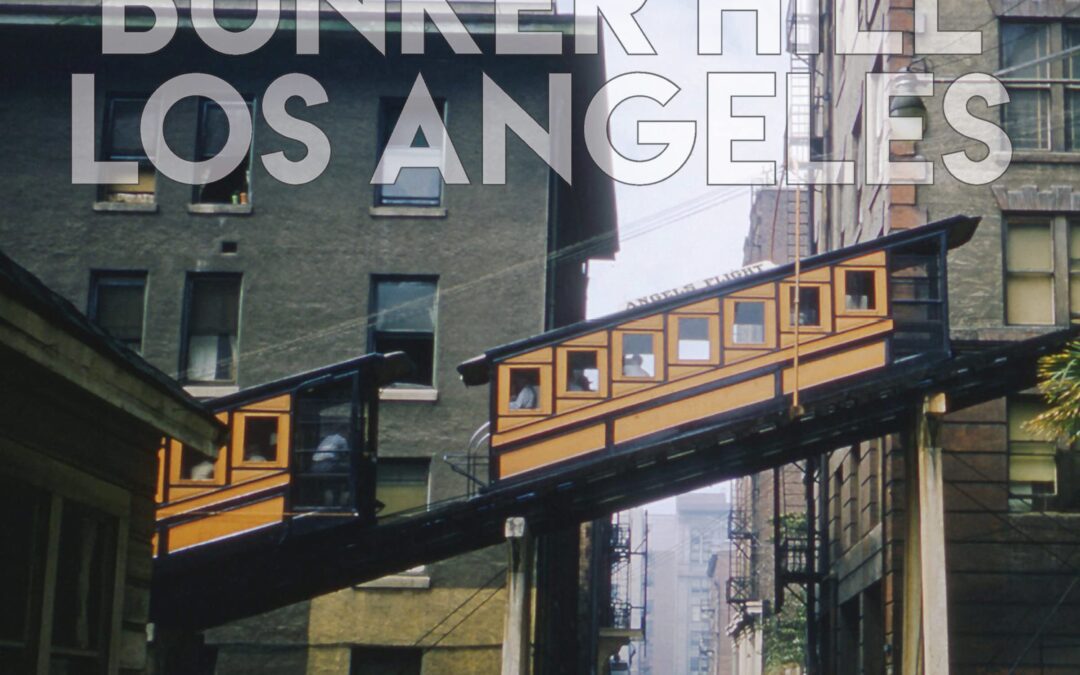
Bunker Hill is the highest point of downtown Los Angeles, both literally and figuratively. Its circle of life has created a continuous saga of change, each chapter rich with captivating characters, structures, and culture. In Bunker Hill Los Angeles: Essence of Sunshine and Noir, historian Nathan Marsak tells the story of the Hill, from the district’s inception in the mid-19th century to its present day. Once home to wealthy Angelenos living in LA’s “first suburb,” then the epicenter of the city’s shifting demographics and the shadow and vice of an urban underbelly, Bunker Hill survived its attempted erasure and burgeoned as a hub of arts, politics, business, and tourism.
As compelling as the story of the destruction of Bunker Hill is―with all the good intentions and bad results endemic to city politics―it was its people who made the Hill at once desirable and undesirable. Marsak commemorates the poets and writers, artists and activists, little guys and big guys, and of course, the many architects who built and rebuilt the community on the Hill―time after historic time.
Any fan of American architecture will treasure Marsak’s analysis of buildings that have crowned the Hill: the exuberance of Victorian shingle and spindlework, from Mission to Modern, from Queen Anne to Frank Gehry, Bunker Hill has been home to it all, the ever-changing built environment.
With more than 250 photographs―many in color―as well as maps and vintage ephemera to tell his dramatic visual story, Marsak lures us into Bunker Hill Los Angeles and shares its lost world, then guides us to its new one.
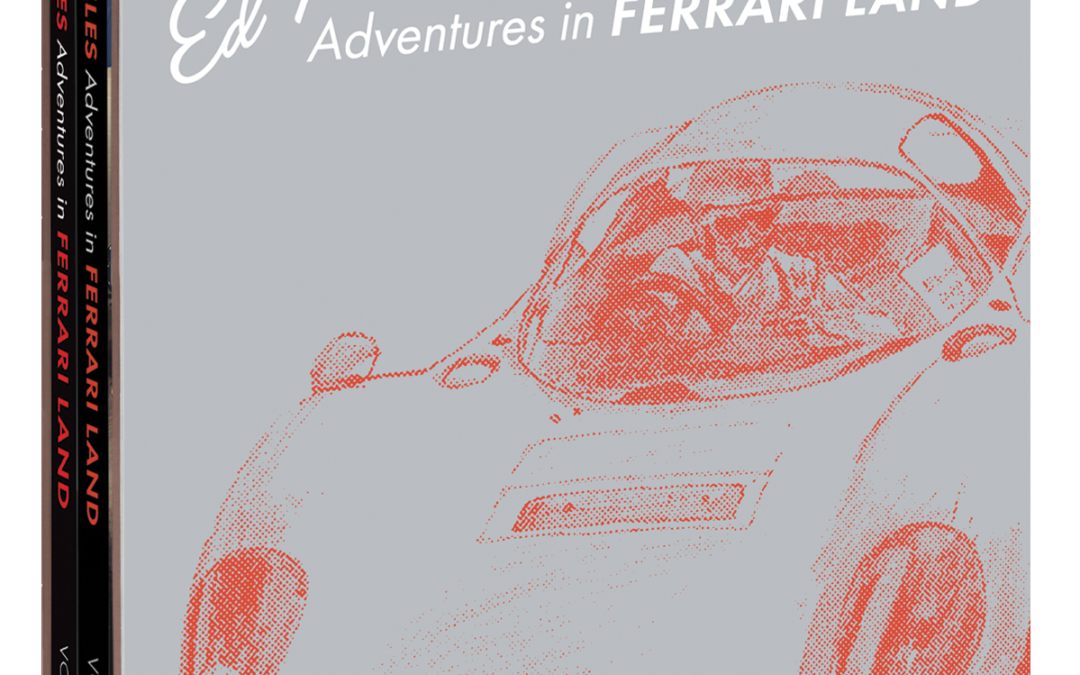
The greatest vintage Ferraris carry stories with them, and part of the value of each unique car is the depth and richness of its history. Edwin K. Niles has been buying and selling Ferraris for most of his life, and the more than one hundred that passed through his hands include some of the most storied and rare examples in existence.
This lavish two book set covers the cars and writings of Niles, offering Ferrari enthusiasts an intimate look into the heritage of some of the world’s most desirable collectible Ferraris.
In Volume 1, Niles recounts his encounter with each car, touching upon the its history and including colorful stories such as how he discovered a 1954 250 Europa Coupe in an underground storage garage while on holiday in Italy and bought it immediately after the owner took him on a screaming ride through the narrow streets of Rome.
The stories of Ed and his cars take you on a ride through Ferrari history, meeting the historians, collectors, and celebrities who live and breathe the cars that bear the prancing horse.
Volume 1 of this set includes a complete inventory of all the Ferraris owned by Niles, with archival photography, drawings, records, and entertaining stories about each one.
Volume 2 collects Niles’s writings about Ferrari, including his colorful column, “Oldtimer’s Corner,” that ran in the FCA Southwest Region’s Sempre Ferrari. Included on those pages, are accounts of a ring of Italian car counterfeiters, the Berlinetta in the barn, the ill-fated but fast Dino, and more tales of living and loving Ferrari.
In short, if you love and live Ferrari, this two-volume set is a must.
2 Volumes in slipcase
372 Pages
12 × 12 × 3.5 in

Although the phrase “trailer trash” is catchy and kitschy in describing mobile home living, this revealing peek into a stereotype that has dogged the mobile home since its earliest days challenges that label and defends the honor of the trailer home. Via nearly 400 colorful and fun images―including 300 postcards, home advertising, emblems, newspaper articles, memorabilia, and other items of interest―the novel point is made: the mobile home most assuredly deserves greater respect. Ten chapters explore features of mobile home living ― from the history, residential parks and amenities, and mobile mansions to interior and exterior designs, and the people who live in them. So, keep an open mind. You may come away with a new attitude about the mobile home.
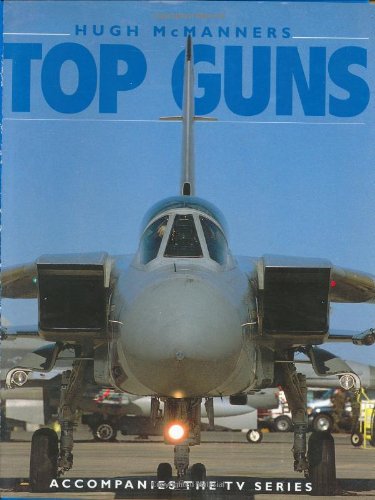
How military flying is done today. “Top Guns” does a great job of giving the reader a feel for what it’s like living and flying as part of an operational fighter squadron. Enough technical information to satisfy a jet fighter-buff, but laced with stories about the men and women who operate, maintain, and command the aircraft. Glossy, full-color photos found throughout.

“Americans in search of family oriented domestic travel, safe and inexpensive, are buying trailers and RVs in record numbers. At the same time—with fantasies of Lauren Bacall sipping an extra-dry Gibson against a gleaming metal doorway in Palm Springs and Lucy and Desi’s madcap Long, Long Trailer trip—they crave the vanished luxury and quirkiness of antique auto trailers. Those simpler, slower days of freedom and security are being recaptured in trailers from all eras, rescued and restored as living, road-ready Americana.
Ready to Roll, with more than 300 color photographs, taps into this trend in gloriously illustrated and insightfully chronicled retro style. Here is the complete evolution of the trailer, from the utilitarian Covered Wagon to the aristocratic Airstream and Aerocar Land Yacht to the homemade Hammer Blows of the Depression. Here too are the people who drove these cherished chariots and increasingly lived in them in trailer parks, from the stereotypically seedy to the likes of Bing Crosby’s exclusive Blue Skies Trailer Village. The amazing camaraderie of groups like the Tin Can Tourists marks the trailer phenomenon as a major segment of American consciousness and history.
”
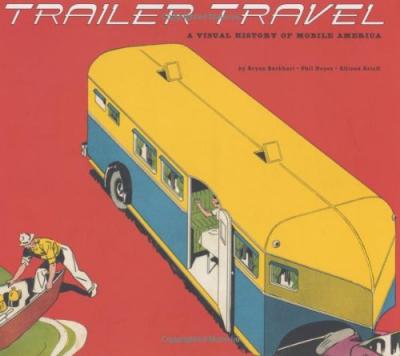
Trailer Travel showcases the rich visual history of America∆s enduring fascination with life on the road. Beautifully reproduced color and black-and-white images culled from public archives and the private collections of passionate trailerites vividly document the travel trailer∆s storied past.
This engaging volume offers a look at motor-camping trips in the early 1900s, the unparalleled innovations in trailer design during the thirties, rare and unique trailer models and interiors, and an extensive array of bold and graphic promotional material, literature, and postcards that illustrate the undeniable attraction of living on wheels. Trailer Travel is the perfect book for the fan of the open road and the fervent collector of trailer ephemera.
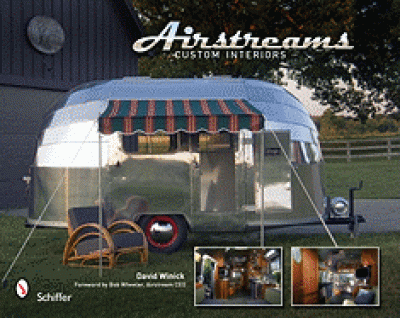
Few shapes rolling down the highway are as instantly recognizable as silver Airstream trailer homes. With over 200 sparkling color images and engaging text, this book presents David Winick’s adventure re-creating custom-built Airstream home trailers that date from1948 to 2007, including his 75th Anniversary Bambi trailer. The challenge of making functional and beautiful small living spaces helped drive the restoration work. Learn the process, beginning with empty shells and ending with rolling Airstream art. This book will enlighten the growing legion of Airstream aficionados, architects and designers with a passion for small space living, and all who have ever camped or admired an Airstream.
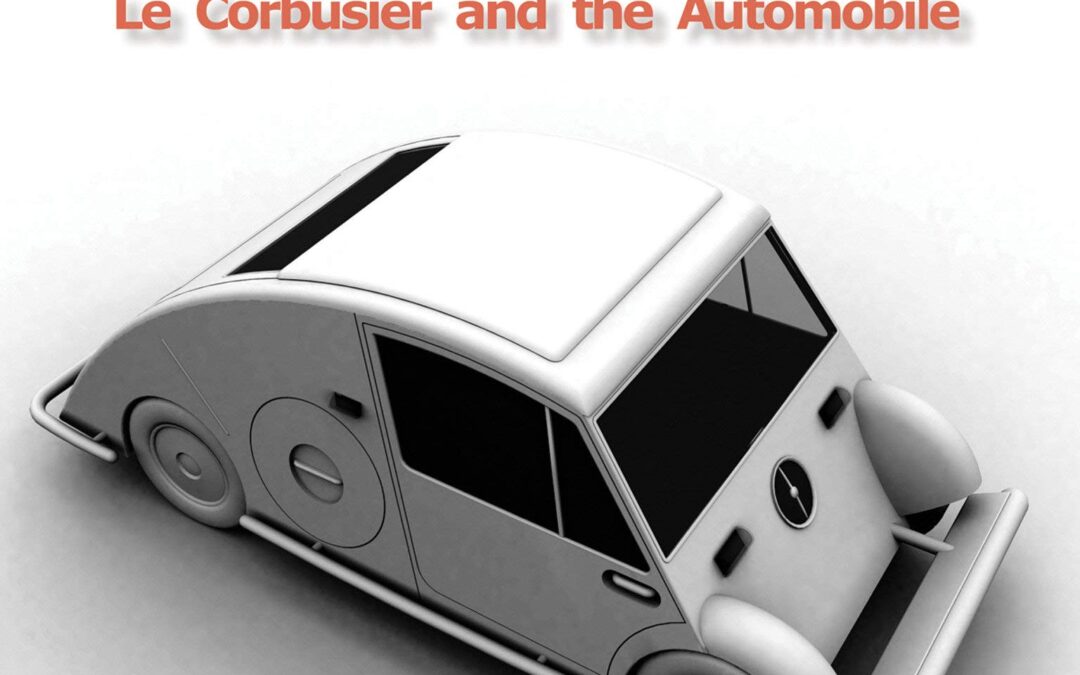
A colorful account of Le Corbusier’s love affair with the automobile, his vision of the ideal vehicle, and his tireless promotion of a design that industry never embraced.Le Corbusier, who famously called a house “a machine for living,” was fascinated—even obsessed—by another kind of machine, the automobile. His writings were strewn with references to autos: “If houses were built industrially, mass-produced like chassis, an aesthetic would be formed with surprising precision,” he wrote in Toward an Architecture (1923). In his “white phase” of the twenties and thirties, he insisted that his buildings photographed with a modern automobile in the foreground. Le Corbusier moved beyond the theoretical in 1936, entering (with his cousin Pierre Jeanneret) an automobile design competition, submitting plans for “a minimalist vehicle for maximum functionality,” the Voiture Minimum. Despite Le Corbusier’s energetic promotion of his design to several important automakers, the Voiture Minimum was never mass-produced. This book is the first to tell the full and true story of Le Corbusier’s adventure in automobile design. Architect Antonio Amado describes the project in detail, linking it to Le Corbusier’s architectural work, to Modernist utopian urban visions, and to the automobile design projects of other architects including Walter Gropius and Frank Lloyd Wright. He provides abundant images, including many pages of Le Corbusier’s sketches and plans for the Voiture Minimum, and reprints Le Corbusier’s letters seeking a manufacturer. Le Corbusier’s design is often said to have been the inspiration for Volkswagen’s enduringly popular Beetle; the architect himself implied as much, claiming that his design for the 1936 competition originated in 1928, before the Beetle. Amado Lorenzo, after extensive examination of archival and source materials, disproves this; the influence may have gone the other way. Although many critics considered the Voiture Minimum a footnote in Le Corbusier’s career, Le Corbusier did not. This book, lavishly illustrated and exhaustively documented, restores Le Corbusier’s automobile to the main text.
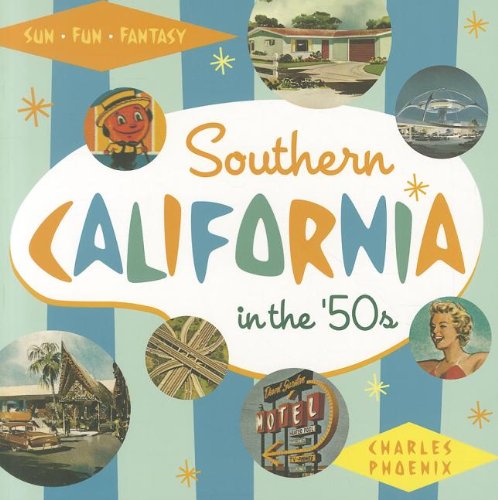
In the 1950s, Southern California was the place to be. The mood was up, prosperity ruled and the standard of living was flying high. It was the land of plenty for a new generation who reinvented the way we lived. With colorful memorabilia and vintage photos, Southern California in the ’50s: Sun, Fun and Fantasy showcases this space-age promised land and the society that jump-started a cultural explosion. Charles Phoenix leads a nostalgic tour of his homeland, providing an up-close view of the way Southern Californians lived, where they worked and how they played. Readers will cruise in hot rods to Bob’s Big Boy, go to the drive-in for Cokes and a movie, enjoy pools, patios and barbecues, and pull into that first McDonald’s. Southern California in the ’50s covers the suburban spread of stylish tract homes, coffee shops, supermarkets, shopping centers and bowling alleys, the modern conveniences that replaced rural valley farms, dairy pastures and fragrant orange groves. Readers rub elbows with the elite in Hollywood, and enjoy novelty of themed restaurants, motels and roadside attractions, attend fairs, festivals and parades and tour Knott’s Berry Farm, Santa’s Village, Marineland, Pacific Ocean Park and Disneyland when all were brand new. Anyone who loves or lives the Southern California lifestyle must have Southern California in the ’50s.
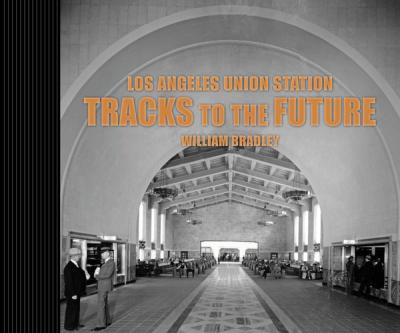
“Los Angeles Union Station- opened May 7, 1939, after days of celebration- was the last great train station built in the United States. Intended as a grand portal to a grand Los Angeles, it was an anomaly, built at a time when America was eager to drive or fly to its chosen destinations. Protected by early inclusion on the National Registry of Historic Places for its iconic architecture, Los Angeles Union Station has had an astonishing and unpredictable rebirth. As the city modernizes its public transportation system linking the culturally and geographically diverse communities Southern California , Union Station-in all its Mission Revival glory-is suddenly the hub of the country’s newest light rail and subway system, serving hundreds of thousands of people each week. . Where Pullman cars and Harvey Girls once served commuters, where the Super Chief and the Coast Starlight, Streamliners and Domeliners converged, Los Angeles Union Station is now a living, breathing center of transportation.
Author William Bradley relates a rich history of fierce battles, cultural relocation, and astounding financial risks culminating in one of California’s most important stories. Augmenting his words with vintage images, Bradley not only shares the tale of the terminal, but of the trains that rode its tracks- those 1939 tracks to the future.
144 pages
150+ rare black and white and color images
12” X 10”
”










